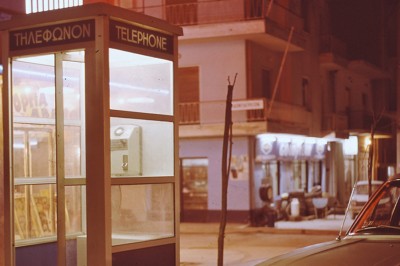On the trail of the Museum’s collections
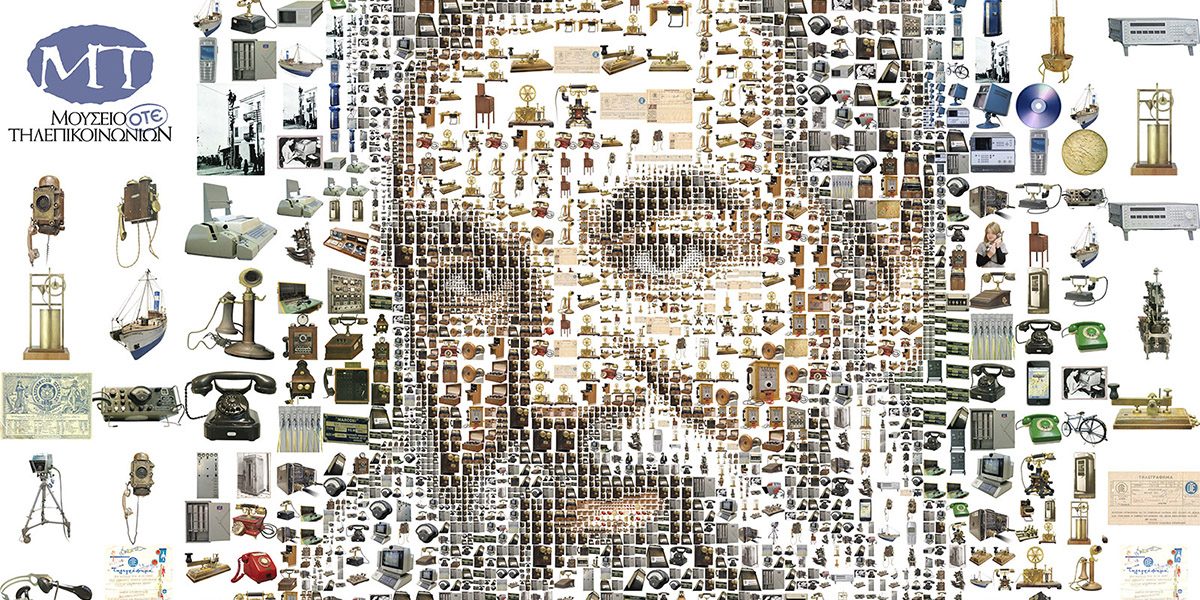
The aim is to highlight the technological evolution of telecommunications
The “yeast” for the creation of the Museum's collections consisted of measuring instruments that began to be assembled in 1968 by decision of the OTE management in a warehouse in Rouf. Multimeters, voltmeters, wattmeters, ammeters, galvanometers, generators, receivers, transceivers and measurement scaffolding were some of the objects selected for museum use, as they were considered to be “precursors of developments in technology”.
The Directorate of Research in 1979 stated in a recommendation that the exhibits should show the technological development of telecommunications. "These exhibits would be models and unmodelled machines, components, devices etc. and would not only be derived from material used in Greece. Under no circumstances should it be assumed that the museum will house whatever useless or obsolete material is in the warehouses."
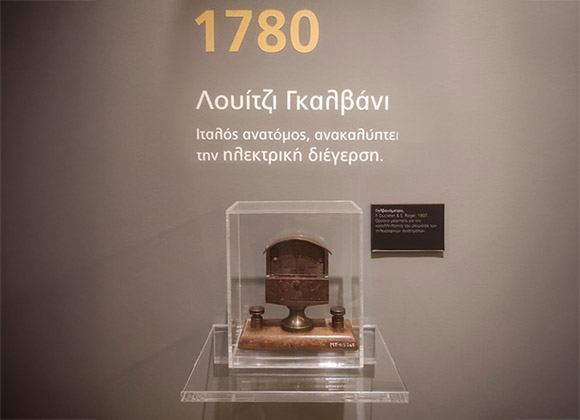
The first Showroom / 1984
In 1984, the Sub-Directorate for the Conservation of Ferrous Systems, led by its deputy director and later founder of the Museum, Stelios Polycrates, started to transfer to its building in Fokionos Negri 3 old instruments dating back to 1925 in order to create an “Instrument Showroom”. These objects, together with the material from the warehouses of Rouf and other material selected from the various OTE departments throughout Greece, were to form the Museum's exhibition, which was inaugurated in 19 February of 1990.
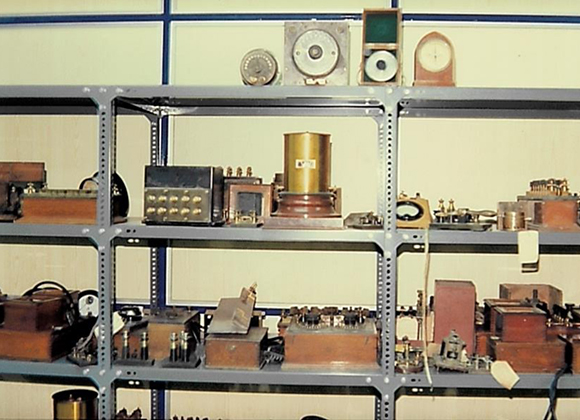
Donations and purchases
Apart from the objects that belonged to OTE from the beginning, the Museum's collections were enriched through acquisitions (donations and purchases). For example, in 1988 Spyros Markos donated 101 telephone sets of collector's value for a fee. With regard to donations, they came (and continue to come) mainly from retired OTE employees, and concern documentary material such as telephone directories, OTE publications and advertising brochures, as well as official documents.
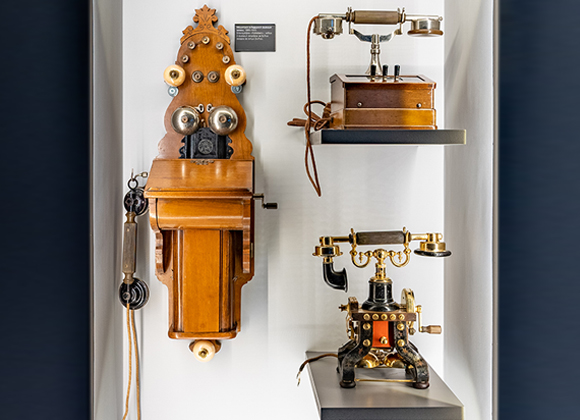
30,000 telecommunications products and media
A separate category of the Museum's collections consists of telecommunications products and media, which includes: 7,990 telegrams, 13,320 telephotographs, 6,364 photographs and 2,593 telecards.
More specifically with regard to the telegrams, 320 of them cover the entire history of Greek telegraphy from 1859 onwards and were purchased in 1997 by Angelos Papaioannou, university professor and collector. An important donor of telegrams was Michalis Tsipidis, who in 2007 donated 322 telegrams from his collection, several of which belong to the 19th century and come from the Ottoman telegraphy of Thessaloniki. There were also many telegrams, as well as other archival material, belonging to Yannis Lambrou, acquired through purchases and donations in the period 2014-2019.
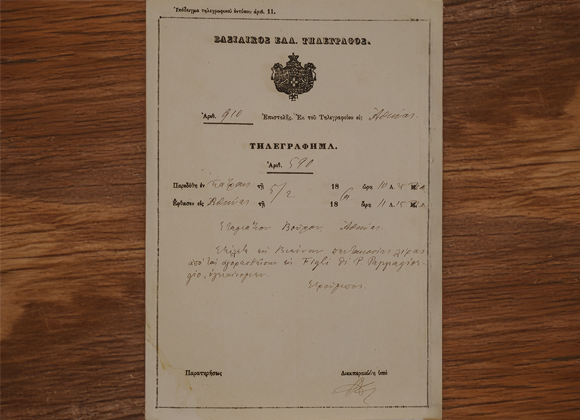
Three categories of a total of 6,200 items
As for the Museum's original objects, which form the core of its collections, they number 6,200 and can be classified into three categories:
- Objects used by users of the services of OTE and its predecessors, TTT and AETE (telephone sets, portable exchangers, Morse telegraphs, telephone boxes, telephotography devices, clockwork, telex, computer samples ).
- Machinery on the unseen side of telecommunications that helps to achieve user communication (Strowger's subrotary selector, banks of transducers, automatic urban telephone exchanges, tubes, cables, etc.).
- Technicians' tools in order to extend and maintain the network (ammeter, voltmeters, ladders, special climbing slings, etc.).
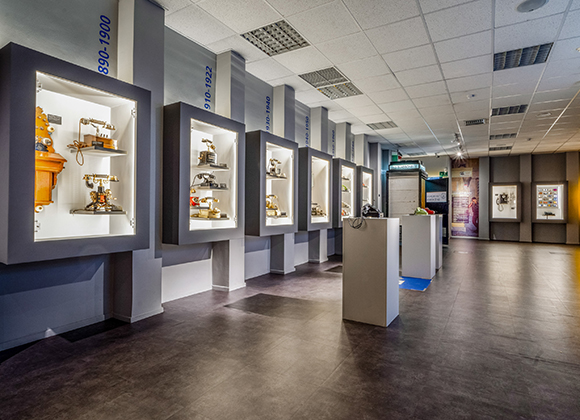
Construction works for the pre-electric period
In addition to the original objects, the Museum includes in its exhibition three machine constructions referring to the pre-electric period: a) the hydraulic telegraph of Aeneas the Ordinary, b) the hour-glass of Leo the Mathematician and c) the optical telegraph of Claude Chappe. In addition, there are two casts in the same section: the first represents the network of torches and the second the operation of the pyre. Finally, two models have been built, one of the ship “Thales the Milesios”, which was used from 1949 to 1983 for laying submarine cables, and one representing the operation and capabilities of satellite communication.

Photos:
- Mosaic portrait of Alexander Graham Bell, the inventor of the telephone, consisting of hundreds of exhibits in the Μuseum. Crafted by the illustrator Haris Tsevas, it adorns the first floor of the Museum.
- Galvanometer (an instrument for measuring the suitability of electricity for use in telegraphic systems) in the Museum's first floor exhibition. Created in 1907 by the French firm of Ducretet & E. Roger, it was part of a telegraphic receiver for Morse signals, made specifically for use by military services.
- The measuring instruments of the Museum's first Exhibition, temporarily shelved during the Museum's configuration phase.
- Some of the oldest telephones in the Museum's collection on the first floor. Left, wooden wall-mounted magnetic telephone set from the 1890-1900 period. Top right, three-line desktop telephone changer (1900-1910) and below, the first mass-produced telephone set (L.M. Ericson, 1892).
- Commercial telegram of 1861. Collection of Ang. Papaioanou, Museum of Telecommunications.
- The room dedicated to the history of telephony, on the first floor of the Museum.
- The construction of Chappe's optical telegraph on the first floor of the Museum. Aeneas the Ordinary's hydraulic telegraph can be seen in the background on the right.



